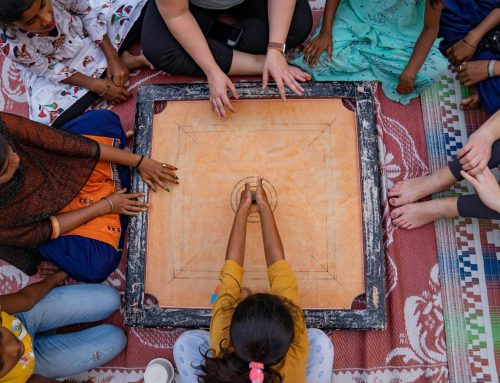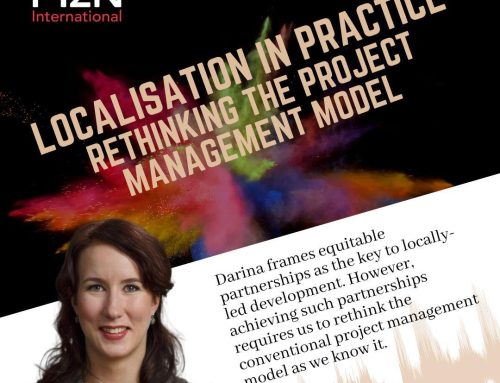Leaders of development and aid organisations talk a lot about changing donor models, value for money, operational efficiency, new technology and changing business models, and many believe that being aware of these mitigates the need for serious changes.
It doesn’t.
The international development and aid sector is undergoing major changes and many organizations need to update or adapt the way they work. Many leaders I speak with are considering moving the business model from that of a donor-funded, traditional nongovernmental organization, towards a sustainable social enterprise.
Yet how does one go from being a traditionally funded development organisation to a sustainable social enterprise? What exactly are the reasons and how does one get such a major change process right? We have worked with a number of mid-sized and large NGOs and social enterprises, some of which have recently been through the transformation process. These are the lessons we have learned.
Why change?
It is impossible to be all things to all people. To reach a clear plan for change, it is important to assess what changes in the organisation’s environment management needs addressing. This also includes identifying the areas that the NGO no longer wants to work in — an even harder decision.
In our experience, most organisations list three key reasons for change:
- A high dependency on only a few large donors makes NGOs financially vulnerable, as well as less of a charity, influencing their culture and the way the NGO works. As Henri van Eeghen, chief operations officer of Cordaid, the largest NGO in the Netherlands, puts it, “When the majority of funding comes solely from a few government donors, organizations take the colors of a civil service authority — slow, bureaucratic and unresponsive.” A broader funding base makes an organisation not only more secure but nimbler and more responsive too.
- The overall reduction in foreign aid and development funds drives a need for diversity and alternative sources of funding. The increased competition from non-NGOs for government funds makes shrinking government pockets seem even smaller. This means a funding strategy reliant on government donors is less likely to render financial sustainability.
- There is an increasing awareness that the old model of investing tax money from the Global North into programmes in the Global South via NGOs is simply not working; organisations need to move from being foreign aid implementers to true international development organisations.
All these changes point to one thing: There is great need to change from a traditional NGO that secures and implements government development and aid projects towards a development organisation that can think creatively, act independently and account for its actions openly.
How to Change
Implementing a lasting change is easier said than done. Most organisations are involved in one change process or another, yet many change projects fail due to change fatigue, skepticism and a lack of clear directions or resources to realise the change plans.
However, good change processes can be implemented cost-efficiently and within a reasonable time span. Looking back at the organisational change processes we have supported over the past few years, the following points have proven critical for their success:
1. Cut back to the (bare) essentials
Decide what you are good at and cut back everything else. For example, at the beginning of 2012, Cordaid was running well over 2,000 projects. By the end of the same year, just under 1,000 of these had been put on hold and transferred to a specially created unit to wind them down.
Mr. Van Eeghen thinks this was key to initiating the change process from NGO to social enterprise. “It cut down complexity, clarified priorities and committed everyone in the organisation to make the project a success”, he said. “Everyone was certain that this is not tinkering with processes or systems anymore: we meant business!”
2. Get help — but not too much
Though it might be tempting to hire multiple consultants, change managers and external focus groups, avoid doing so or the change process might be “the thing the consultants do”. Instead, hire one or two good consultants to provide perspective. Consultants do not have a career ambition within the organisation which can be useful when it comes to defending and promoting difficult decisions.
Make sure these consultants are there to help with the development of business plans for each business unit, working with — not just for — the board and managers. This will require longer involvement from consultants, typically 12 to 18 months, with alternating full-time and part-time periods. Any good advisory organisation should accommodate this.
3. Build a business plan — a real one
Simply setting out your values and ambitions, and spelling out the external forces influencing the organisations, does not suffice. And yet, the business plans of many NGOs are just that.
A real business plan addresses the six operational areas of any organisation: activities, structure, communication, HR, finance and support infrastructure. It answers essential questions such as:
- Which activities will be continued; which ones will not be?
- Where does the funding come from now; where will it come from next year?
- What operational policies will be changed?
- Which business units will be created, changed or dissolved?
- What do we expect from each grade of employee?
- How will divisional business plans be developed? By when?
- What IT requirements have been identified and how high will the investment be?
One of the most successful change processes I have witnessed has given priority to answering these questions, resulting in the setting up of new business units within the organisation — each one with clear tasks and responsibilities and each one with its own distinct business plan.
4. Accept the casualties
Change can be hard and uncomfortable and it often feels like some colleagues do not really support the initiative. Be clear in your communication and expectations from each staff member. Ask them if they really understand the need for and the path of the change. Inquire if they think they have the skills, tenacity and motivation to see it through.
One major NGO in the United States entered into formal agreements with its employees, asking them if they could deliver this change and adding this to the employment contracts. It worked for the most part, and where it didn’t, the agreement offered a clear path towards exiting the employee from the organisation.
In Cordaid’s case, its move from NGO to social enterprise eventually led to a radically new employee mix in which half the senior staff currently running its 11 business units were hired from outside and half were promoted from within.
5. Give skills and responsibility for profit and loss
Recently, the CEO of one of the top five development NGOs in the United Kingdom said to me, “Giving people the skills and responsibility to run their own profit and loss creates better results and increases satisfaction of most managers.”
Indeed, giving people the power to understand finance and the tools to manage it, coupled with the sole responsibility for the profit and loss they create, is one of the most effective ways to action change. “Profit” is not a dirty word in the development and aid sector, and once everyone understands that a reasonable surplus actually ensures sustainability and independence from donors, most managers enthusiastically support it.
However, a fear of finance needs to be overcome. Managing budgets and financial information is often seen as “something the accountants do” rather than a useful management tool for programme professionals. Skilling people up through innovative training is crucial. This does not cost the earth either (on average less than USD 1,250 per staff member) and can be done in a matter of weeks with the right training provider.
6. Move towards “open development”
Transparency and accountability are buzzwords, but they can be so much more. Open development means all project data is made fully public, certified by the International Aid Transparency Initiative and presented online. Cordaid’s move towards a fully open development made staff, suppliers and partners act more responsibly and professionally. Moreover, open data has helped Cordaid cut its administrative burden, as certain donors can access all the necessary information online and therefore do not need time-intensive reports on a regular basis.
MzN International has also moved towards open development earlier this year, and we have seen an immediate positive change in the way people behave. In short, open development makes sense and we expect it to become a requirement for many donors in the near future.
A word about the costs
Many organisations assume that large-scale, far-reaching change processes are often unaffordable. Yet, by assessing the costs, we found that a successful change process from NGO to social enterprise costs less than five percent of a year’s turnover. Additionally, such a change typically results in a significant increase in funding shortly afterwards, meaning major returns on investment.
The reality is that the old NGO model simply cannot be sustained in a time of shrinking government funding and an increased call for efficiency and impact in international development. It is time to realise that NGOs need to become more independent from governments, financially resilient and accountable for their activities. All this calls for a move from the traditional NGO business model to that of a social enterprise. This change, much easier than it is often perceived, has started, and has the potential of making the development sector become more effective and efficient in delivering aid around the world.
Want to know more? Contact us: office@mzninternational.com.





